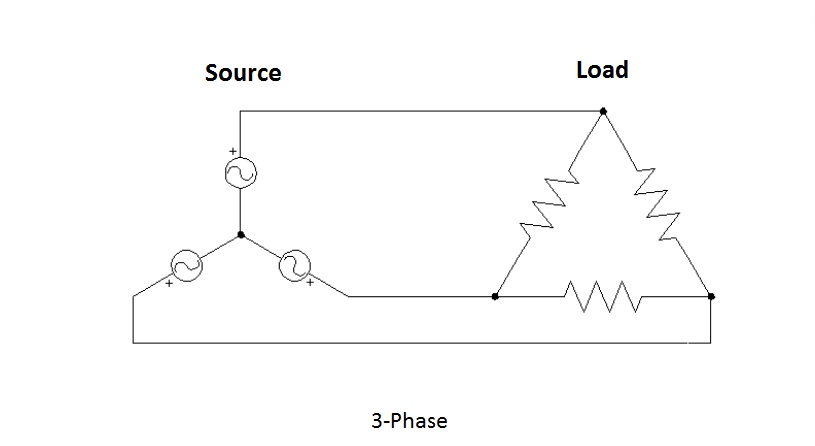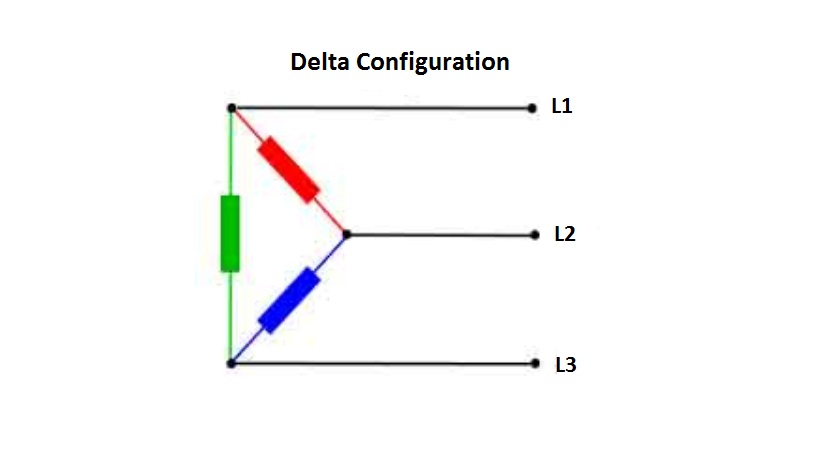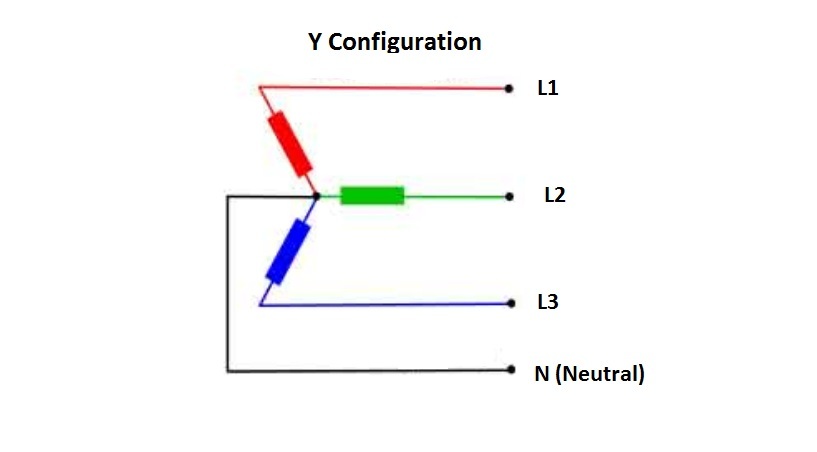So far, the clamp meter is among the top spot in the ranks of safe instruments for measuring current. Undoubtedly, we found the claim true for single-phase circuit systems.
However, the clamp meters also play a vital role in measuring 3-phase circuits and systems. We can safely measure current in 3-phase circuits with maximum efficiency and safety.
The current 3-phase circuit, Y or Δ configuration, can be easily measured. We can do so by observing the current in each phase through a clamp meter as we do for a single phase. By getting all three readings, we add these values to get the total amount of current. Of course, safety should not be compromised, and we need to consider the important parameters.
Let’s learn how to use a clamp meter on 3-phase systems in detail.
How to Use a Clamp Meter on 3-Phase?
We can use a clamp meter for measuring current in 3-phase circuits by just putting the clamp of the clamp meter around the phase wire. This will give us the amount of current in that specific wire.
After this, we add the current values in three phases to get the total amount of current.
Measuring Current in 3-Phase
Measuring a current is tricky if we do not have a clamp meter. It involves extra effort and the safety is compromised. A clamp meter is an excellent choice in this regard.
Let’s learn about 3-phase before going into detail to use a clamp meter.
What is 3-Phase?
Power companies provide electrical power in the form of AC. This power is supplied in an assembly called a three-phase, 3-phase, or 3-ɸ power source.
This assembly is used in the generation, transmission, distribution, and often usage of electrical power. There are three or four wires for the distribution of electrical power.

Each wire is known as a line and has a specific color. Red, blue, and green color wires show lines. The black color is specified for the neutral wire.
Commonly, we have a single phase for our domestic use. This supply could be line voltage (between two lines), or phase voltage (between line and neutral). Heavy-duty AC motors use all three phases.
We mentioned that the 3-phase might be 3 or 4-wired. The number of lines is always three as mentioned. However, there are two types of 3-phase assembly, one of them provides extra neutral wire.
Let’s discuss both assemblies in detail.
1. Delta configuration (Assembly)
In this assembly, the coil of the generator or load is attached in series with each other. However, each connecting node serves as an output (in source) or input (in load).

We have to deal with the three wires or lines, without neutral. Due to its shape like a delta in a simpler form, it is called delta assembly.
2. Wye Configuration (Y-assembly)
Each coil or load is connected through a single node. That specific node is used for getting neutral wire. The other sides of the load or coil are used as lines.

The color sequence for this assembly is the same as that of the delta configuration. However, the neutral wire is colored black for distinguishing purposes.
The high power line transmits power in the form of a delta configuration. The output of our domestic line wires is connected with the Y configuration of the transformer.
Let’s learn about the qualities of a clamp meter for 3-phase current measurement.
Qualities of the Best Clamp Meter for 3-Phase
Every good clamp meter with a standard rating is the best clamp meter for 3-phase. However, the following qualities must be checked in a clamp meter before using it for 3-phase.
1. Safety
We must check the safety category of a clamp meter before using it for 3-phase. It is mentioned in the clamp of a clamp meter. Generally, the voltage in each line is 120V. However, it depends on the workplace.
Some famous brands install extra safety to the clamp meter that provides extra cover for the user. The best clamp meter for HVAC is a good choice for 3-phase.
2. Current Rating
When we are dealing with a 3-phase, we should expect a high current. Hence, the current rating of a clamp meter is important to consider before using it for 3-phase circuits.
Commonly, from 200 to 600A for current is suitable for our use. If we can get hands on a maximum value, it would be good.
3. Comfort
The fieldwork is not a good place for a rough and weak instrument. A user must feel comfortable while using a clamp meter in a workplace. It includes the quickness of reading, toughness, and durability.
Moreover, a good clamp meter is easy to carry from one place to another. It should not be felt like an extra burden. Hence, the dimensions and weight of a clamp meter are also essential.
4. Well-defined LCD
This factor is the least essential, but it can hinder the task of measuring current. Often, clamp meters are available in small LCDs or displays with less exposure.
The display of a good clamp meter should give a well-defined reading in every type of environment.
Let’s study how we can measure current in 3-phase after getting a perfect clamp meter.
Measuring Current in 3-Phase
We can measure the line current and total current of the 3-phase circuit through a clamp meter. The following steps are involved while doing so.
1. Assessing the Line
Firstly, we must have a clear picture of our 3-phase circuit. For this purpose, we should observe each wire. In short, the color of each wire tells us about the circuit.
2. Using a Clamp meter
We all know the basic use of a clamp meter. If readers do not have a rough knowledge, the given link will help:
We place a clamp meter around each line wire to get the value of the current in each branch. After that, the value of the current in each branch is noted.
3. Adding Current
Up till now, we got the value of current in each branch. However, if we need to find the value of the whole system, add the values of all three currents.
We can follow the same method for delta and Wye configuration.
Conclusion
Clamp meters are handy instruments for measuring current safely. We can also measure the value of current in 3-phase circuits. The method is simple but first, we must know about 3-phase circuits.
AC power is generated, distributed, and supplied by using a 3-phase assembly. It consists of three or four wires. Each wire is known as a line. For low consumption, a single-phase supply is enough.
The 3-phase power source or load could either a delta assembly with no neutral or a wye assembly with a neutral. Heavy-duty machines required a 3-phase power supply.
To measure current in 3-phase, we need a clamp meter with extra safety, a high current rating, comfortable using dimensions, and a well-defined LCD.
We can measure the current in each branch separately by connecting the clamp meter around the target wire. For total current, we add the three measured currents.
Other useful posts:
